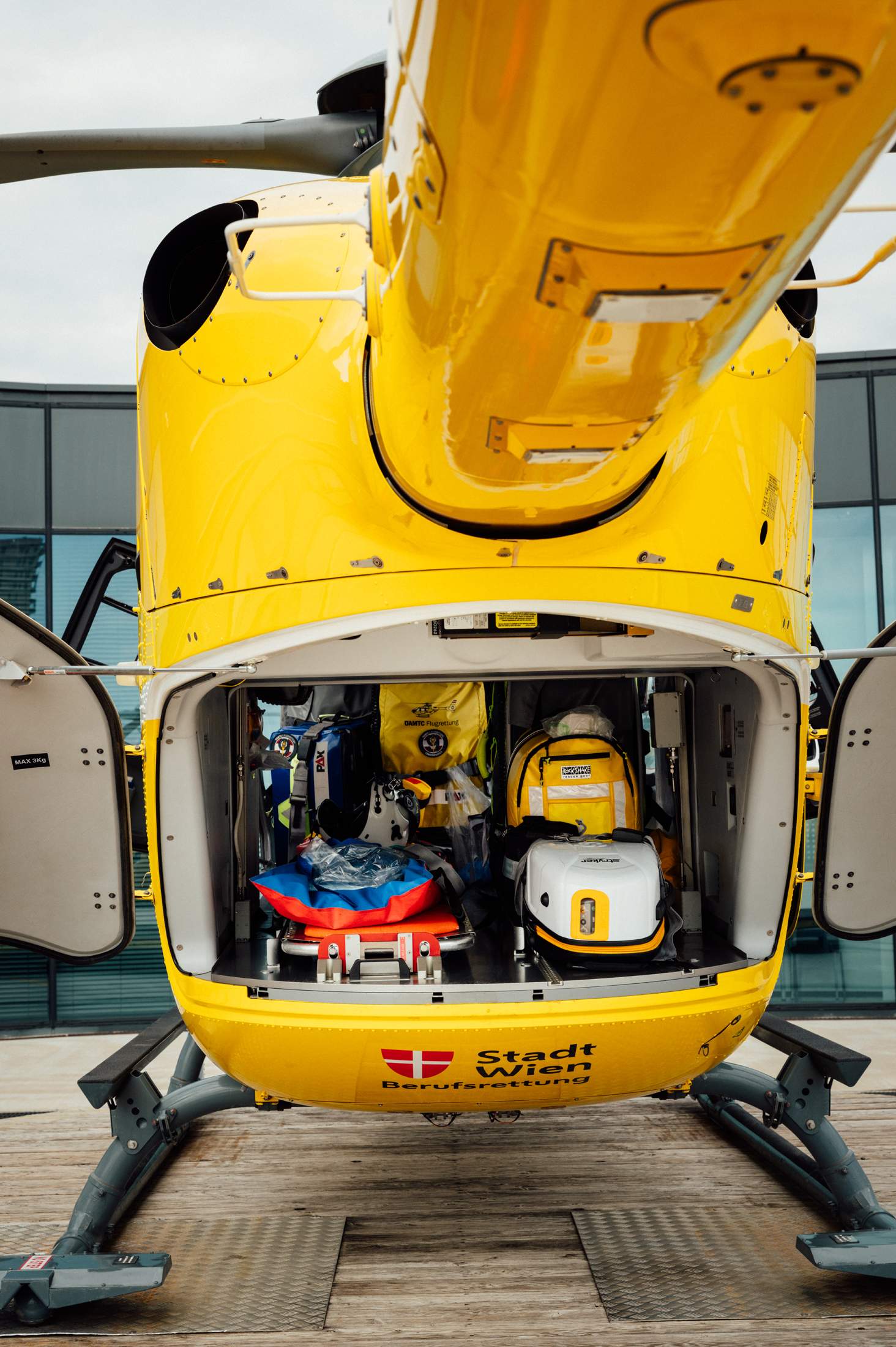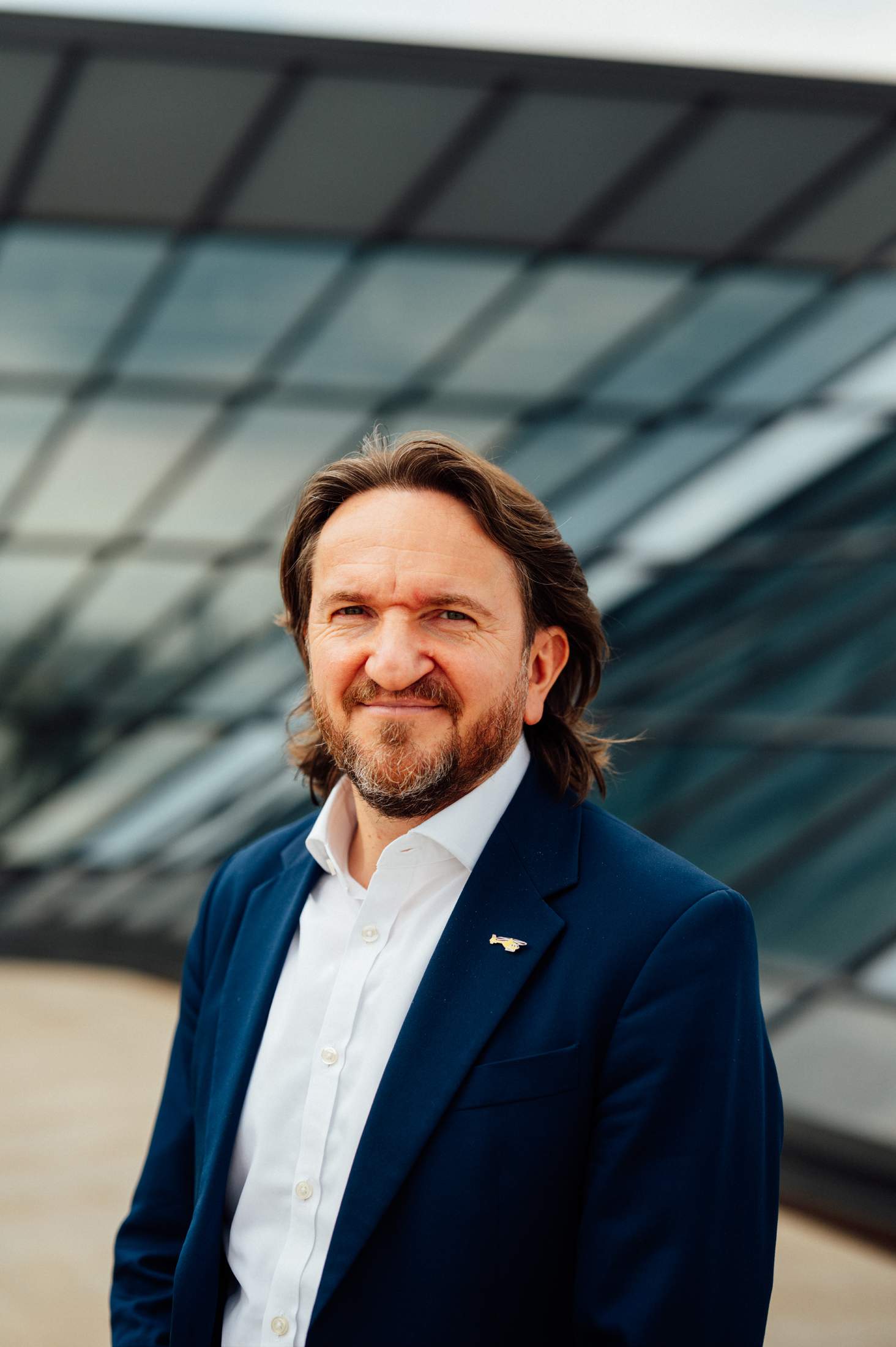Business: Vienna / Global
From car to chopper
Motorists’club ÖAMTC has shifted gear to offer air-rescue services and even welcome cyclists. We sign up for a day.
It’s a warm July afternoon and the rotor blades of a canary-yellow Airbus h135 helicopter are turning lazily on the roof of the öamtc headquarters in eastern Vienna. In the near distance, the radar atop the city’s international airport’s air-traffic-control tower seems to mirror their movement. Then, suddenly, as if the wind has just picked up with furious haste, the blades whizz into action, propelling the helicopter up into the clear blue sky, leaving a burst of downwash in its wake.
The öamtc (Der Österreichische Automobil, Motorrad und Touringclub) was founded in 1946 as an automobile and motorcycle club serving the burgeoning numbers of Austrian car owners. For decades it mostly provided breakdown cover but, in recent years, as a future without internal combustion engine (ice) vehicles has become ever more likely, the öamtc has undergone a reinvention. Today it is a one-stop shop for all things mobility. It still provides its members with roadside assistance but is also branching out into, among other things, travel and tourism. Its glassy, ufo-like headquarters in the Austrian capital, which opened in 2017, is meant to symbolise this transition. Perhaps most radically for a motorists’ association, today there are many cyclists among the öamtc’s 2.5 million members who can take advantage of roadside bicycle assistance delivered by mechanics who ride around on electric bikes. On the car side of things, meanwhile, increasing numbers of electric vehicles (EVs) are being serviced, meaning that technicians must be as well versed in the battery-powered as in the ice.




Launched in 1983, the association’s air rescue service, which provides medevac assistance across Austria, was the precursor to this diversification. The öamtc has 21 air bases across the country, with a 31-strong fleet of Airbus h135s. The upkeep of these €7m aircraft is financed partly through öamtc membership fees and partly through government funding and insurance contributions. Though the öamtc is an ngo, it works closely with state and regional authorities, a common practice in Austria and Germany, where clubs and associations (known as Vereine) frequently perform critical state-adjacent duties.
Co-ordinating the öamtc’s air-rescue operations is ceo Marco Trefanitz, a cool-as-a-cucumber former telecommunications executive, who doesn’t bat an eyelid or raise his voice when the helicopter whisks into action. “The whole system is organised by the state, which runs the dispatch centres in the nine provinces of Austria and sends calls through to us,” says Trefanitz as he invites monocle to sit down in the rescue team’s helipad-side rest area, which features an array of dumbbells and exercise machines. There is an adjacent kitchen and storage room, as well as a command centre dominated by a large monitor streaming live footage from around the country, alongside real-time weather maps. Long-haired and open-shirted, Trefanitz, who assumed his position in 2012, doesn’t look like the typical Austrian ceo. There’s a bit more pressure in his new job than in his previous one but he insists that it is far more rewarding. “The work here is not about me or shareholder value. Everything we do at the öamtc is about how we can improve to better help our members and our patients.”




About five minutes after rushing off, the h135 returns. “Storno,” mouths Captain Robert Gallmayer as he climbs out of the cockpit: “cancelled”. False alarms are routine. About 10 per cent of calls are made as a precaution rather than a necessity, says Gallmayer after the rotors have died down and it’s possible to talk normally again. Often, he is already airborne while the call is still in progress; sometimes, the operator might conclude that ground vehicles are sufficient for the job, which means flying back to base to refuel and await another call. Gallmayer, lead pilot among 13 at the Vienna base (there are 71 across the entire öamtc), has already flown two missions today, a normal number for this time of year as hundreds of thousands of Austrians begin their summer holidays. Both Gallmayer’s earlier missions involved dropping divers into the Danube in search of missing swimmers; one was pulled out alive, while the other sadly could not be found.
Another common call requires retrieving someone who has had a stroke or heart attack from a mountainside or forest track. Indeed, car accidents or breakdowns are in the minority, with helicopters only called to the scene when the injured need to be rushed to hospital. During the summer, there are usually about five or six missions a day, and the feedback section of the öamtc air rescue’s website gives heartening indication of how successful these predominately are. Pride of place among the comments and photos is given to a child’s drawing of those famous yellow helicopters. Below it reads, simply, “Thank you for saving us.” —
Steering committees
As people diversify the way they travel, car-focused organisations would do well to follow their lead. For the öamtc, what began as a way of helping members has morphed into a vital service.


